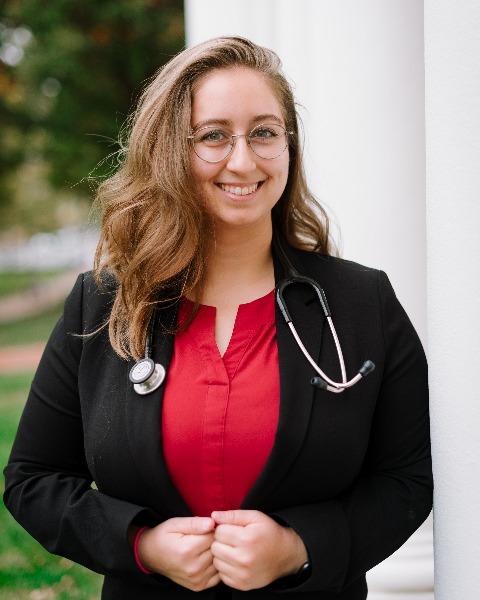Telemedicine/EHR/Medical Informatics
Telemedicine/EHR/Medical Informatics 2
631 - Impact of Telemedicine on Access to Care for Rural Transgender and Gender Diverse Youth
Monday, May 1, 2023
9:30 AM - 11:30 AM ET
Poster Number: 631
Publication Number: 631.455
Publication Number: 631.455
April W. Kimble, UVA Childrens, Stanardsville, VA, United States; Francesca Najwa. Azar, University of Virginia, Charlottesville, VA, United States; Genevieve Lyons, University of Virginia School of Medicine, charlottesville, VA, United States; Susan H. Gray, University of Virginia School of Medicine, Charlottesville, VA, United States; Pamela B. DeGuzman, University of Virginia, Charlottesville, VA, United States

Francesca Najwa Azar, MSN (she/her/hers)
MSN Candidate
University of Virginia
Charlottesville, Virginia, United States
Presenting Author(s)
Background: Transgender and gender-diverse (TGD) youth are highly susceptible to negative health sequelae
including high rates of depression, suicidal ideation, self-harm, and suicide attempts. Rural TGD
youth may have less support than their urban peers. The rapid expansion of telemedicine during the initial months of the coronavirus pandemic enhanced access to care for many populations, but is not clear how this has impacted
access for rural TGD youth, particularly those living in areas with limited broadband access.
Objective: To explore access to healthcare for rural TGD youth by determining how telemedicine impacts appointment attendance.
Design/Methods: We extracted a secondary data set from the electronic health record (EHR) of patient encounters in an
adolescent and young adult (AYA) clinic that provides gender-affirming (GA) care. The clinic serves both rural and urban populations. Patient address was used to measure rurality and distance to care variables. All visits to the
clinic from March 2020 through December 2021 were included in the data. Descriptive statistics
and bivariate analyses were conducted to characterize the population and multivariate analysis
were used to model the association between visit attendance and covariates of interest.
Logistic regression with GEE was implemented to account for repeated measurements
and within-patient correlation.
Results: Over 18,000 patient visits occurred, with 984 visits (5.5%) involving GA care; 386 (39.2%) of these visits were by rural patients. During the study period 4917 (27.4%) of all visits were scheduled for telehealth
compared with 149 (15.1%) of gender visits. Although the overall no-show rate for the clinic was
10.9%, the rate for GA visits was significantly lower (6.5%; p< .001) and the rate for GA visits for
patients from rural counties was even lower (5.7%, compared with 8.93% for non-GA rural visits).
The no-show rate for GA telemedicine visits was 0.0%. In multivariable analysis, GA visits were
associated with a 42% reduction in odds of no-show after adjusting for rurality, telemedicine visit, age
(over 18 vs. under 18), travel time, and patient’s gender identity.
Conclusion(s): AYA from rural areas who are seeking GA care are more likely to attend clinic visits and
telemedicine visits than patients seeking other types of care and from non-rural areas, suggesting
that this care is highly valuable to patients. Ensuring a reliable
telemedicine connection for rural AYA is an important component of providing access to GA care.
